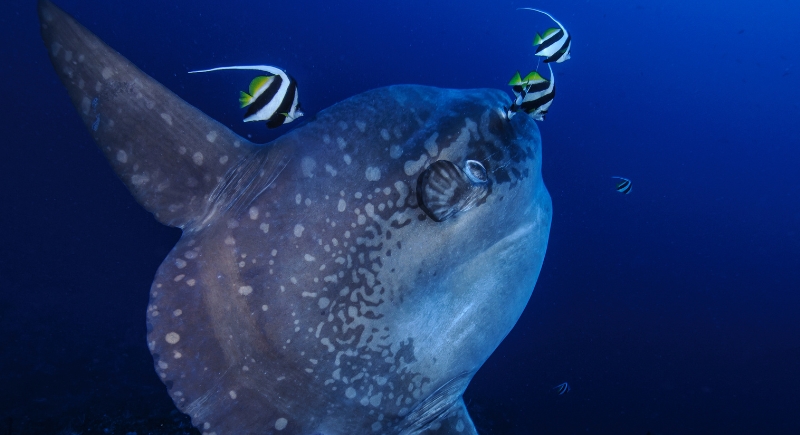The Mola Mola Is the Dumbest Fish in the Ocean and Here’s Why
The ocean is full of unusual animals, but few catch people off guard quite like the mola mola. It’s a massive, slow-moving disk of a fish with fins that seem placed almost at random, and it drifts through the water as if it has nowhere particular to be. Spotting one near the surface usually sparks the same mix of surprise and curiosity, mainly because it looks so unlike anything else. It gives off the impression of a creature that nature assembled in a hurry, yet somehow it works, and that’s part of what makes it so fascinating.
A Shape That Makes No Sense
The ocean sunfish, known as the Mola Mola, comes into the world with a regular tail fin that simply never develops. As it matures, that missing piece folds into a rounded structure called a clavus. The result resembles half a fish with no real back end, just a circular body with two oversized fins and a mouth that never fully closes.
The Latin word ‘mola’ means millstone, and that fits this odd disc shape. Despite that awkward outline, the species still reaches a maximum length of 11 feet and can weigh up to 2.5 tons. Some individuals have pushed close to 5K pounds. That size earns it the title of the heaviest bony fish on record, yet the build looks like something that should never have left a sketchbook.
Movement That Defies Logic
Its movement only adds to the confusion. Instead of using a tail to push itself forward, it relies on the large fin on its back and the matching fin underneath, which flap in a steady up and down rhythm while the body stays almost completely rigid. The result is a slow glide that tops out around 1.8 miles per hour. That pace feels unbelievable for an animal that crosses wide stretches of open ocean, yet it still manages to feed, migrate, and survive. Many divers say they first notice a single fin rising toward them and assume a shark is approaching, only to realize a moment later that the odd, rounded shape belongs to a mola mola.
Weird Eating Habits

Image via Getty Images/Martin Voeller
The mouth structure is unique. The fish has fused teeth that form a beak-like shape, and it cannot shut its mouth completely. The diet consists of jellyfish, algae, zooplankton, and small fish. Jellyfish offer low nutritional value, so the sunfish must consume large quantities to maintain its size. That feeding routine sounds like a lifelong buffet with little payoff. Yet this strategy works well enough for the species to reach massive proportions, which adds to its reputation as an improbable survivor.
Sunbathing And Parasites
The Mola Mola often lies on its side near the water’s surface, exposing a fin that looks like it belongs to a shark. Many scientists believe it does this to warm its body after deep dives. Another theory suggests it positions itself to attract seabirds and smaller fish that remove parasites. The species carries many skin parasites and sometimes jumps up to 10 feet into the air in an attempt to shake them loose. Cleaner fish and even birds take advantage of this floating buffet.
Conservation And Threats

Image via Canva/Kamchatka
Despite its size, the species faces significant pressures. Conservation assessments list it as vulnerable, with declining population trends. Natural predators include orcas, California sea lions, and great white sharks. Even with those threats, people still encounter the fish in temperate and tropical oceans, including locations such as Baja California, Bali, Western Spain, the Inner Hebrides in Scotland, and the Galapagos Islands.
A creature that looks unfinished, swims like it missed the lesson on propulsion, eats low-value food through a mouth that never closes, sunbathes to warm up, jumps to shake off parasites, and grows from a speck to a floating slab has earned a reputation unlike any other. This explains why so many people give it side-eye wonder and label the mola mola as the dumbest fish in the ocean, even while staring at it with reluctant fascination.